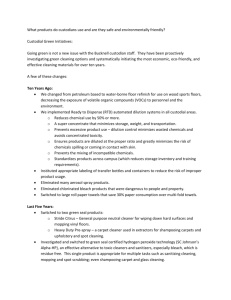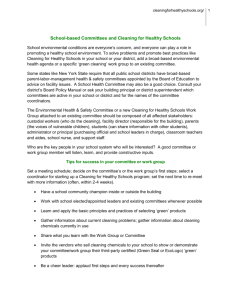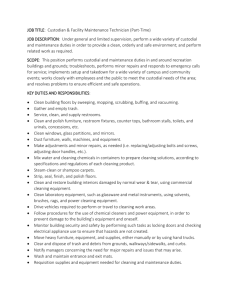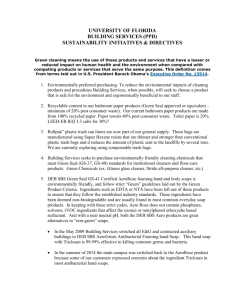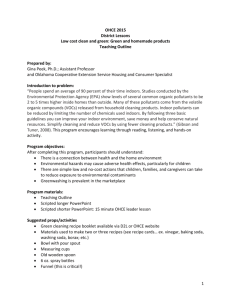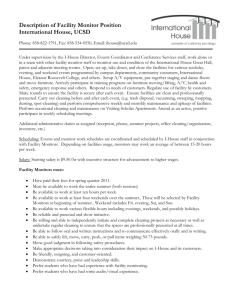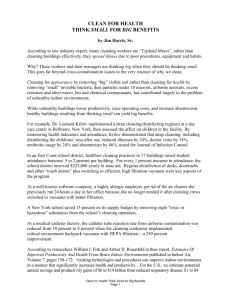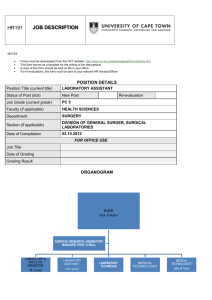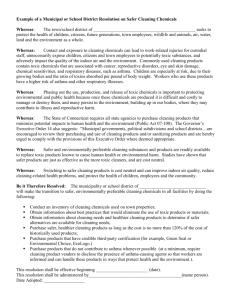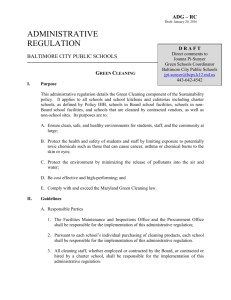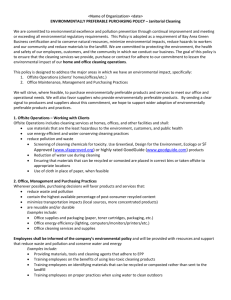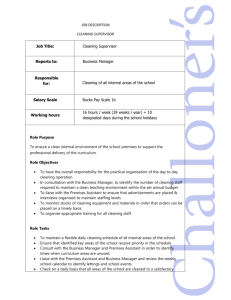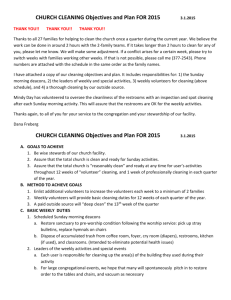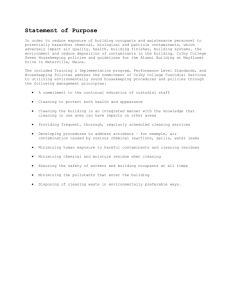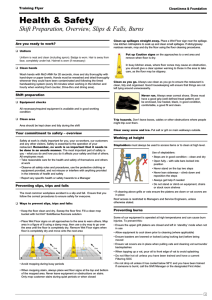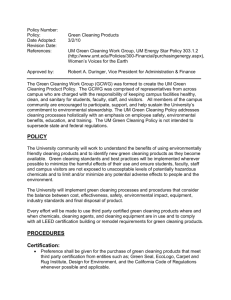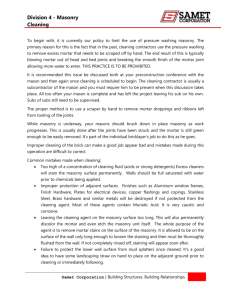Facility Services Strategic Plan
advertisement
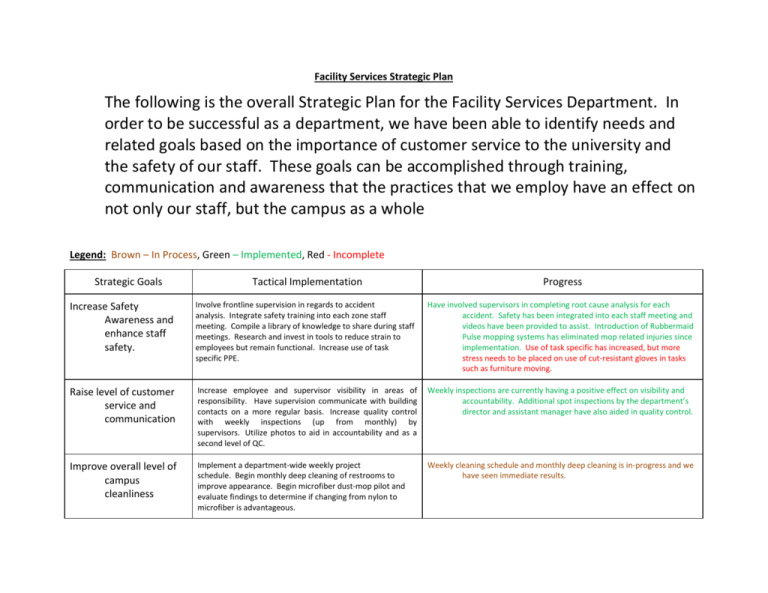
Facility Services Strategic Plan The following is the overall Strategic Plan for the Facility Services Department. In order to be successful as a department, we have been able to identify needs and related goals based on the importance of customer service to the university and the safety of our staff. These goals can be accomplished through training, communication and awareness that the practices that we employ have an effect on not only our staff, but the campus as a whole Legend: Brown – In Process, Green – Implemented, Red - Incomplete Strategic Goals Tactical Implementation Progress Increase Safety Awareness and enhance staff safety. Involve frontline supervision in regards to accident analysis. Integrate safety training into each zone staff meeting. Compile a library of knowledge to share during staff meetings. Research and invest in tools to reduce strain to employees but remain functional. Increase use of task specific PPE. Have involved supervisors in completing root cause analysis for each accident. Safety has been integrated into each staff meeting and videos have been provided to assist. Introduction of Rubbermaid Pulse mopping systems has eliminated mop related injuries since implementation. Use of task specific has increased, but more stress needs to be placed on use of cut-resistant gloves in tasks such as furniture moving. Raise level of customer service and communication Increase employee and supervisor visibility in areas of responsibility. Have supervision communicate with building contacts on a more regular basis. Increase quality control with weekly inspections (up from monthly) by supervisors. Utilize photos to aid in accountability and as a second level of QC. Weekly inspections are currently having a positive effect on visibility and accountability. Additional spot inspections by the department’s director and assistant manager have also aided in quality control. Improve overall level of campus cleanliness Implement a department-wide weekly project schedule. Begin monthly deep cleaning of restrooms to improve appearance. Begin microfiber dust-mop pilot and evaluate findings to determine if changing from nylon to microfiber is advantageous. Weekly cleaning schedule and monthly deep cleaning is in-progress and we have seen immediate results. Larger implementation of green cleaning practices and reduction of harmful chemicals in routine and periodic cleaning Investment into microfiber cleaning tools (cloths/mops). Replace multiple cleaning chemicals with safer, less hazardous chemicals. Replace floor stripping/refinishing practices with scrub/recoat cycles where possible to reduce exposure to hazardous chemicals. Have switched from standard general cleaners to a H2O2 based product which will be used in approximately 80% of all cleaning operations. Have begun changing to less aggressive floor processes, but due to past practices, floor stripper is still occasionally employed for older finish. Increase level of training for frontline employees. Creation of a department-wide training program. Increase the OJT given to new employees. Implementation of task/equipment specific training for staff. Department-wide training program and creation of OJT routine is still in development. Task/equipment specific training is underway. Increase departmental productivity and sustainability while reducing overall cost. Conduct pilot programs and evaluate findings in regards to high capacity tissue from various manufacturers. Implement formation of a campuswide floor crew in order to better maintain campus floors and reduce cost through routine maintenance. Research centralized trash collection practices at sister institutions and similar facilities and implement if found sustainable. Tissue pilot programs are still being organized. Implementation of the floor crew has reduced overall floor care costs while improving appearance of campus facilities. Trash collection strategies have been researched are being implemented in a step by step program.


